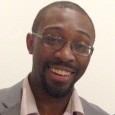For 30 years, everyone fighting to defeat HIV put hope in being the last generation impacted by HIV. This hope kept those of us from key populations fighting, kept us moving and kept us working to save ourselves and our communities. We believed that with bold action and resolve we could make real something that has only been seen through the lens of mathematical models and hypothetical propositions. And yet progress is slipping away through our fingers.
Our colleagues and brothers and sisters, in solidarity, have achieved much in eastern and southern Africa, seeing millions receive treatment and the benefits of viral suppression. Yet in so many contexts, a lack of will has stalled progress that is essential if our hopes are ever to come true. A lack of urgency, resources, and the political will to bring our most powerful interventions to bear has brought the field to a fork in the road. We have arrived at a moment that shows us what is possible, or we could backslide away from the gains so hard-won in recent years.
In 2014, UNAIDS and partners launched a “Fast Track” strategy to end AIDS by 2030. It was called a leap forward, laying out a plan to quicken the implementation of proven treatment and prevention interventions with milestones or targets to be met by 2020, setting the world on a trajectory to end the AIDS epidemic by 2030. In 2014 this was to be the blueprint for the work ahead.
Many of these targets will be missed in 2020, that is known. But understanding why we didn’t make it and what must change will be the true testament of our moment. The field can deploy our newfound knowledge of the last six years, collaborate with communities, and fill in the gaps so that we develop programming that is adaptive and meaningful in the lives of the communities that must be reached. With smarter, more adaptive plans, fed by what we’ve learned, we’ll set in motion proactive, grounded strategies that, at their core, are centered around those most affected.
The past six years have brought important new lessons and reinforced ones we’ve known a long time. We understand the power of treatment and the challenge of sustaining people’s connection to care. We’ve seen again the importance of programs that take aim at the structural drivers of the epidemic for the most at-risk groups. The prevention package expanded, and as it continues to grow so does our understanding our how to best work with communities. The field is exploring and refining how to build solid programs that are rooted in science and adapted to fit the needs of particular people, places, and priorities. All this will come into full strength if we follow a path carved by deep community engagement because we know community has the power to change the world.
So when I asked the question “Now what?” I say we continue to cycle out programs that aren’t working or are no longer relevant to people’s experiences, making new models that speak to the needs of the community. And that we do it with the single-minded purpose of ending the pandemic while maintaining justice and bending it towards equity. We must explain how this work fits into people’s lives. We must be a groundswell. We are in a transformative time. A sprint towards strong targets over the next 10 years, one that is bold daring and inclusive, even if we come up short will save millions of lives. We have to be able to explain the why and how of what has changed already, what must still be done, and how it all makes people’s lives better than the day before, and better for the day to come…if we pull together.
So that is what we do now.
Matthew is the Director of US Policy & Advocacy at Health GAP. He is also the community co-chair of the Microbicide Trials Network, member of the Vaccine Advocacy Resource Group (VARG), Board of Directors member for the AIDS Treatment Activist Coalition (ATAC) and a member of AVAC’s PxROAR United States program.
Originally posted on AVAC’s blog








Comments
Comments